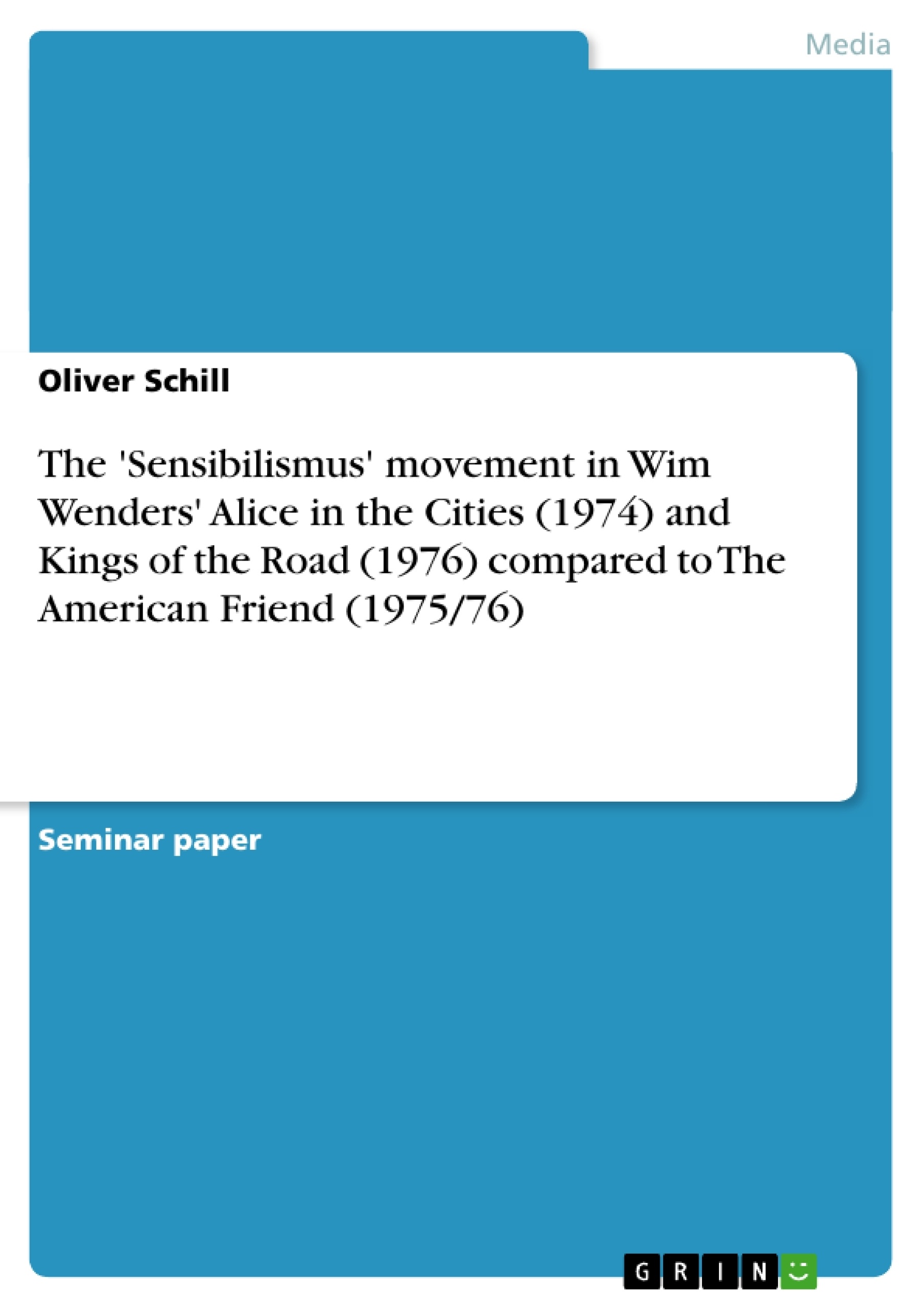“Never before and in no other country, were pictures and language in general treated with fewer consciences than here [in Germany].” Wim Wenders wrote in an article about Joachim Fest’s documentary Hitler- Eine Karriere (Hitler – A Career). “I don’t think, that anywhere else has been such a loss in terms of confidence in the own pictures, the own histories and the own myths, than with us.” (Novell-Smith, p.566)
These lines, which Wim Wenders wrote in the article, stand for the situation of the German film during at least 30 years. The heritage of the film of the Third Reich – the instinctively mistrust against all pictures and histories, which concern the German identity – was the main goal for the German directors of the 60s and 70s to work on. The new German cinema saw itself as part of the political public education system. After the Manifest of Oberhausen in 1962 several German filmmakers decided to make independent productions of film.
“[…]We declare that our ambition is to create the new German feature film. This new film requires new freedoms. Freedoms from commercial influences. Freedom from the dominance of interest groups.” […] (Excerpt of the Oberhausen Manifest in Pflaum, Hans Günther. Cinema in the Federal Republic of Germany. Trans. Timothy Nevill. Published by Inter Nationes. Bonn 1993, p.9)
Although not mentioning the question of financial support, the young enthusiastic filmmakers hoped to get money from the government in order to be able to work as “authors”. The government saw the cultural advantages of a strong national cinema and found 1965 the Kuratorium Junger Deutscher Film (Board for the New German Film). “Debuts by directors such as Alexander Kluge, Peter Fleischmann and Werner Herzog were assisted by awards from the Board.”[…] Little was changed by the law regulating assistance for the German film which came into force in 1968. With the conditions of production prevailing in this country in the mid-Sixties, it was basically impossible to implement the “new language” postulated in the Oberhausen Manifesto.” (Pflaum, p.10) The state-funded German cinema seemed so to have a secret, special cultural order from the government to present Germany to the rest of the world as a cultural motivated and especially self-critique country. That's what the following lines are about and how it came to these years were simply named "New Sensibilismus".
Inhaltsverzeichnis (Table of Contents)
- The 70's in Germany - The “Author” against the “Issue”
- The development of “Sensibilismus” in Germany
- 'Sensibilismus' in Wenders' Alice in the Cities (1974) and Kings of the Road (1976)
- Sensibilismus in Wenders' “The American Friend” (1975/76)
Zielsetzung und Themenschwerpunkte (Objectives and Key Themes)
This paper analyzes the “Sensibilismus” movement in German cinema, specifically focusing on the works of Wim Wenders, and compares it to the broader context of the “New German Cinema” movement during the 1970s. It explores the development of this aesthetic and thematic sensibility within Wenders' films and examines the role of “Sensibilismus” in shaping his cinematic approach. The paper also investigates the historical and socio-political context surrounding German cinema during this period, examining the influence of state funding and the impact of television on filmmaking.
- The “Sensibilismus” movement in German cinema
- Wim Wenders' films as examples of “Sensibilismus”
- The influence of the “New German Cinema” on the development of “Sensibilismus”
- The role of state funding and television in German cinema during the 1970s
- The impact of “Sensibilismus” on the aesthetics and themes of German cinema.
Zusammenfassung der Kapitel (Chapter Summaries)
The first chapter of this paper examines the historical and socio-political context of German cinema during the 1970s, exploring the legacy of the Third Reich, the influence of the Oberhausen Manifesto, and the rise of the “New German Cinema.” It explores the debate between “author-oriented” and “issue-oriented” filmmakers, highlighting the conflicting approaches to filmmaking within this movement. The chapter also examines the impact of state funding and the growing influence of television on film production during this era.
The second chapter focuses on the development of “Sensibilismus” in Wim Wenders' films Alice in the Cities (1974) and Kings of the Road (1976). It explores the unique aesthetic and thematic sensibilities that characterize Wenders' approach to filmmaking and examines the role of “Sensibilismus” in shaping his artistic vision. The chapter also examines the influence of American road movies on Wenders' work and analyzes the thematic and stylistic elements of his films.
Schlüsselwörter (Keywords)
Key terms and concepts covered in this paper include "Sensibilismus", "New German Cinema", Wim Wenders, Alice in the Cities, Kings of the Road, The American Friend, state funding, television, author-oriented, issue-oriented, film form, aesthetic sensibilities, thematic concerns, American road movie, and the historical and socio-political context of German cinema in the 1970s.
- Quote paper
- Oliver Schill (Author), 2003, The 'Sensibilismus' movement in Wim Wenders' Alice in the Cities (1974) and Kings of the Road (1976) compared to The American Friend (1975/76), Munich, GRIN Verlag, https://www.grin.com/document/20710



